How to Heal: The One-Year Anniversary of Pittsburgh
I drive through Squirrel Hill, along Shady Avenue to its intersection with Wilkins Avenue, every day: to get coffee, go to the gym, visit my parents’ house for Shabbat dinner. During the last few weeks, I’ve passed the stunning art exhibit of solidarity that recently went up to cover the ugly barriers that have concealed the crime scene at the Tree of Life Synagogue for almost a year. I’ve walked past the paintings and drawings sent from around the world to remind the Jewish community of Pittsburgh that we are loved and not alone. But as I’ve studied them, I’ve felt ugly emotions that should have no place in my heart: jealousy, bitterness, failure.
I went to work on the evening of October 28, 2018 because even after a tragedy, life keeps going. I didn’t want to be treated like a child. I didn’t want pitying glances and soft voices wishing me well. And because I wasn’t even sure how I wanted others to react, I decided it was better to be on my own. Because even in the most crowded rooms, like my synagogue, which hosted diplomats and leaders a week after the shooting, I already felt alone. Being surrounded by the people I love, all feeling such intense, nearly unnamable pain, made me realize how incapable I was of helping them. If I didn’t know how to handle it myself, how could I comfort others? Any iteration of “it will be okay” felt hollow and false. So I resolved to direct my pain and the subsequent healing process inward, frightened of accidentally making someone else’s journey more difficult.
Some say that it is in these situations of anguish and tragedy that people produce the best art. The proof of this can be seen on Wilkins Avenue now: visual messages of love from those who survived similar attacks and who beautifully put strength, solidarity, and love onto paper. I have also seen the documentaries, the poetry, and the paintings. But when I look at the art exhibit, I am reminded of my failure to create anything.
The few times I attempted to put my pain onto paper, I felt guilty. I didn’t want to seem exploitative, like I was using Pittsburgh’s mourning for my own gain—even though as someone who grew up one block away from Tree of Life, it was my pain too. I felt my hometown deserved better than that. I didn’t want admiration or attention drawn to myself after the attack that had hurt so many. So I gave up every time. Documents without titles litter my computer folders the way crumpled papers would once fill trash cans. I feel no desire to revisit and complete them. They’re merely half-baked notions of self-care that wouldn’t have healed myself nor anyone else.
On the one-year anniversary of the Tree of Life Synagogue shooting, I have no tangible proof that I did any work to heal myself or others, and I feel guilty for it. I went to work every day as if nothing had happened, crying only on my drive home or while listening to sad songs. I wasn’t able to bring myself to do anything except take my mind off how unsafe I felt in my own city, my own home.I spent a lot of time on the couch watching sitcoms while casting glances at my laptop, my camera, and other tools I could have used to create something to articulate how I was feeling. I have come to realize over the past year that I shouldn’t need to have proof of my pain, even if I was the only one expecting that of myself in the first place. When I look at the art beautifying what had become a physical symbol of hatred in Pittsburgh, I shouldn’t feel an ugly twist of envy in my belly.
But this “envy” that I feel is really the desire for better coping mechanisms. In this gig economy (which I’m very much a participant in) we are inundated with messages compelling us to always keep our heads up, to keep moving, to create, and in some cases, to commodify our pain. After the 2018 shooting, I felt this pressure intensely. With everyone seemingly publicly coping through art or writing, I wondered if my private methods of handling grief were just as legitimate. One of the biggest lessons I’ve taken from 2019 is that trauma, and the thorny maze of healing, can, and sometimes should, be separated from the daily grind that encourages us to monetize the hobbies that often serve as our therapy. I can now wake up and drive down the street I grew up on without automatically bursting into tears, and I’m not really sure how I got to this point because the process has been so messy, painful, and sometimes self-destructive. It’s been private.
But I did get here somehow. This essay is for anyone who froze—whose mind went inward instead of outward, who didn’t leave their home for a bit, or who didn’t want to go home at all. Both online and in real life, we talk and hear a lot about self-care, and for some people, self-care needs to result in a product. For me, it just couldn’t. It has been beautiful to see the ways in which people have channeled their pain into art, but if you didn’t have the energy to create, that is beautiful too. Being here to write about this is proof of the self-care that I had to undertake, even if it wasn’t pretty. If your self-care after tragedy is cooking soup and taking naps, I commend you for recognizing what you need and not forcing anything that could’ve cut deeper. If you talked about your feelings then, are ready to talk about them now, or don’t think you’ll be ready for another few years, or ever, my heart is with yours.


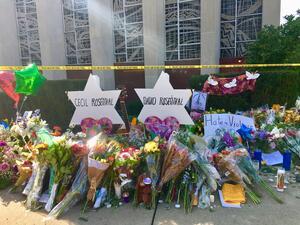
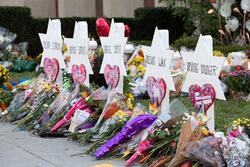
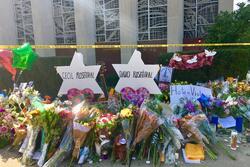
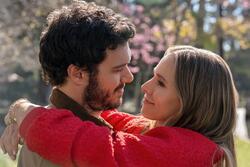
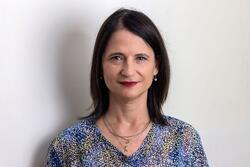

I really needed this. Thank you so much, Lani.
Beautiful Lani. Thank you for sharing your experience. I don’t believe that you are the only one with these feelings, but you have given voice to it in such a compassionate way.
Thank you so much for sharing this.